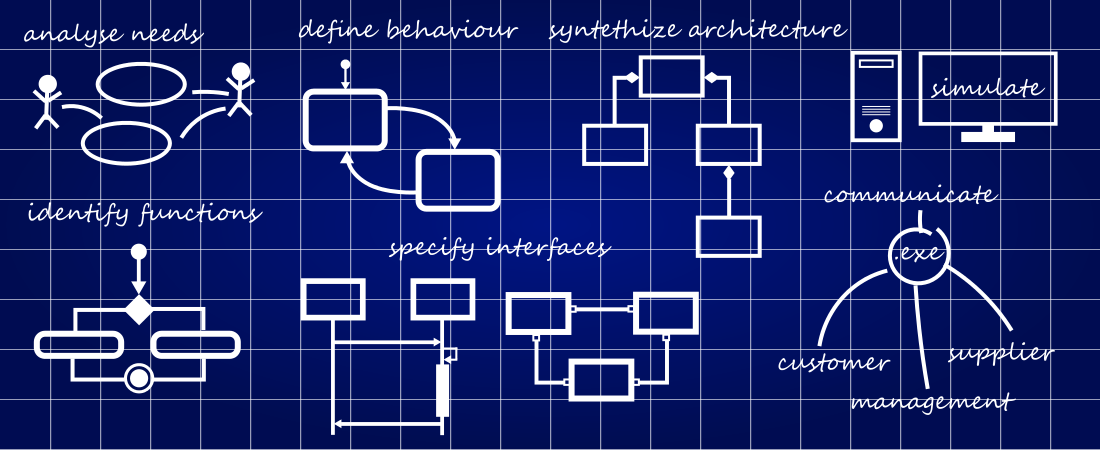Model Based Systems Engineering
Classical system design processes and methods purely based on textual specifications have come short with regard to today's increasing system complexity. Usual challenges, such as the mutltiple interpretation of written specifications increase with the size and complexity of the system to be developed and the sheer number of requirements written for modern systems makes it increasingly difficult for systems engineers to manage how requirements influence one another and how changes will impact previous design decisions.
Model Based Systems Engineering (MBSE) allows system design teams to effectively manage the development of today's complex systems, by making use of models to analyse customer needs, define system specifications, detect inconsistencies early in the development cycle, test system functionality and communicate the design concepts and decisions, thus leading to higher quality designs.
Our MBSE Approach
Our MBSE approach is based on the use of the Systems Modeling Language (SysML) throughout the development cycle. Analysing customer requirements via Use Cases, defining functional and physical architecture decomposition and intercommunication with Block Definition Diagrams (BDD) and Internal Block Diagrams (IBD), displaying information exchange through Sequence Diagrams and describing system behaviour with Statecharts, Activity Diagrams and Flowcharts.
We have chosen IBM Rational Rhapsody as our modeling environment first and foremost due to its simulation capabilities, because we not only create a SysML Specification of your system, we also:
- Make the SysML specification simulate your system behaviour in order to verify your design.
- Pair our simulation models with powerful graphical user interfaces to allow designers to fully analyse and control their systems.
- Create a Standalone application out of the simulation model, so you can easily provide your system functionallity to any interested party.
